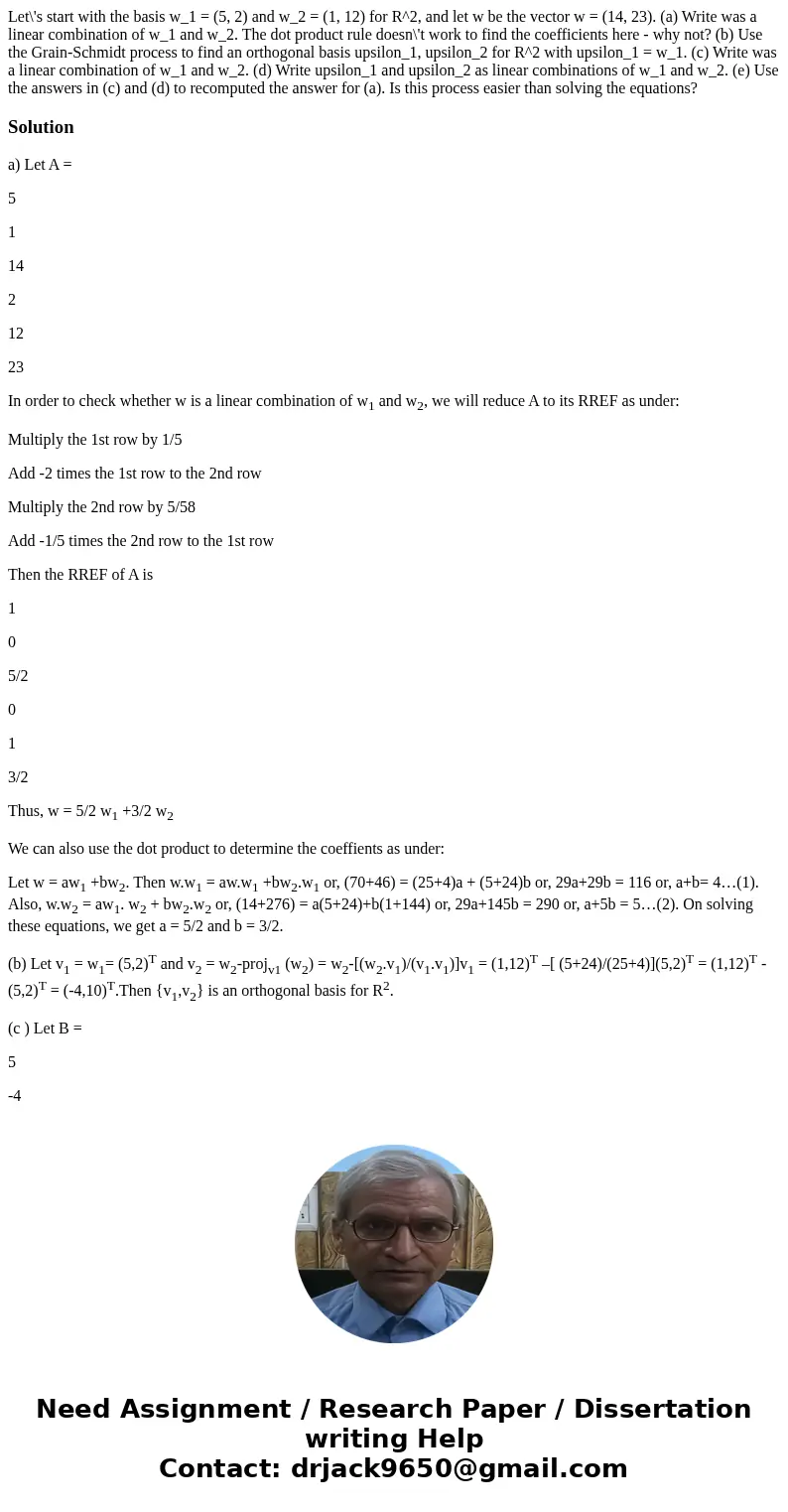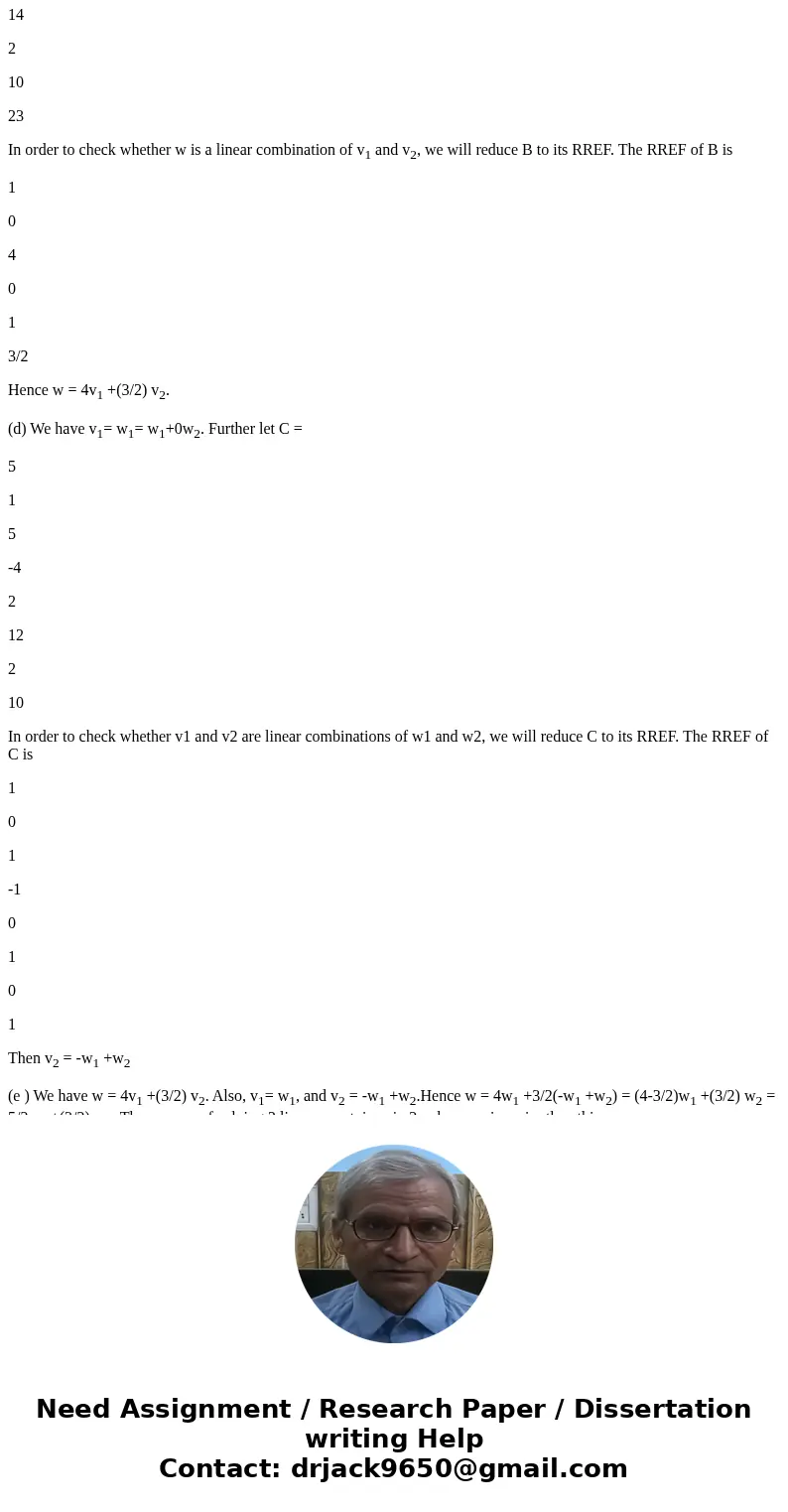Lets start with the basis w1 5 2 and w2 1 12 for R2 and le
Solution
a) Let A =
5
1
14
2
12
23
In order to check whether w is a linear combination of w1 and w2, we will reduce A to its RREF as under:
Multiply the 1st row by 1/5
Add -2 times the 1st row to the 2nd row
Multiply the 2nd row by 5/58
Add -1/5 times the 2nd row to the 1st row
Then the RREF of A is
1
0
5/2
0
1
3/2
Thus, w = 5/2 w1 +3/2 w2
We can also use the dot product to determine the coeffients as under:
Let w = aw1 +bw2. Then w.w1 = aw.w1 +bw2.w1 or, (70+46) = (25+4)a + (5+24)b or, 29a+29b = 116 or, a+b= 4…(1). Also, w.w2 = aw1. w2 + bw2.w2 or, (14+276) = a(5+24)+b(1+144) or, 29a+145b = 290 or, a+5b = 5…(2). On solving these equations, we get a = 5/2 and b = 3/2.
(b) Let v1 = w1= (5,2)T and v2 = w2-projv1 (w2) = w2-[(w2.v1)/(v1.v1)]v1 = (1,12)T –[ (5+24)/(25+4)](5,2)T = (1,12)T - (5,2)T = (-4,10)T.Then {v1,v2} is an orthogonal basis for R2.
(c ) Let B =
5
-4
14
2
10
23
In order to check whether w is a linear combination of v1 and v2, we will reduce B to its RREF. The RREF of B is
1
0
4
0
1
3/2
Hence w = 4v1 +(3/2) v2.
(d) We have v1= w1= w1+0w2. Further let C =
5
1
5
-4
2
12
2
10
In order to check whether v1 and v2 are linear combinations of w1 and w2, we will reduce C to its RREF. The RREF of C is
1
0
1
-1
0
1
0
1
Then v2 = -w1 +w2
(e ) We have w = 4v1 +(3/2) v2. Also, v1= w1, and v2 = -w1 +w2.Hence w = 4w1 +3/2(-w1 +w2) = (4-3/2)w1 +(3/2) w2 = 5/2w1 +(3/2) w2. The process of solving 2 linear equatoions in 2 unknowns is easier than this process.
| 5 | 1 | 14 |
| 2 | 12 | 23 |



 Homework Sourse
Homework Sourse